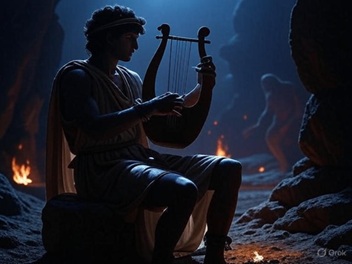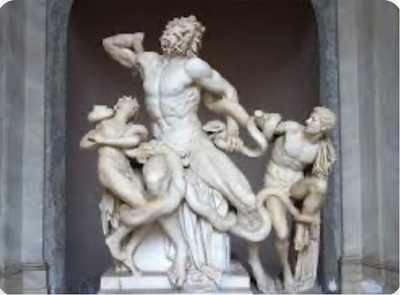|
TRANSLATE THIS ARTICLE
Integral World: Exploring Theories of Everything
An independent forum for a critical discussion of the integral philosophy of Ken Wilber
 Dr. Joseph Dillard is a psychotherapist with over forty year's clinical experience treating individual, couple, and family issues. Dr. Dillard also has extensive experience with pain management and meditation training. The creator of Integral Deep Listening (IDL), Dr. Dillard is the author of over ten books on IDL, dreaming, nightmares, and meditation. He lives in Berlin, Germany. See: integraldeeplistening.com and his YouTube channel. He can be contacted at: [email protected] Dr. Joseph Dillard is a psychotherapist with over forty year's clinical experience treating individual, couple, and family issues. Dr. Dillard also has extensive experience with pain management and meditation training. The creator of Integral Deep Listening (IDL), Dr. Dillard is the author of over ten books on IDL, dreaming, nightmares, and meditation. He lives in Berlin, Germany. See: integraldeeplistening.com and his YouTube channel. He can be contacted at: [email protected]
SEE MORE ESSAYS WRITTEN BY JOSEPH DILLARD
THE DREAMING KOSMOS
A Naturalistic Approach to Emergence and Transformation through Transpersonal Dream Yoga Harnessing Negentropy, Chaos Theory, and the Attractor Informational network to Unlock Emerging Potentials Chapters 1 | 2 | 3 | 4 | 5 | 6 | 7 Contains AI-generated content. The Dreamlike Nature of RealityThe Dreaming Kosmos, Chapter 1Joseph Dillard
 Orpheus, a gifted musician and poet, son of the Muse Calliope and Apollo, possessed a lyre whose music could charm all living beings and even move the inanimate. He fell deeply in love with Eurydice, a wood nymph, and they married. Tragically, on their wedding day, Eurydice was bitten by a viper and died, descending to the underworld. Devastated, Orpheus resolved to retrieve her. Armed with his lyre, he journeyed to Hades, the realm of the dead. His music softened the hearts of Charon, the ferryman, Cerberus, the three-headed guard dog, and even the stern judges of the underworld. When he played before Hades, the god of the underworld, and Persephone, his queen, their cold resolve melted. Moved by his lament, they agreed to release Eurydice, but with a condition: Orpheus must lead her out without looking back until they reached the upper world. Orpheus began the ascent, Eurydice following silently behind. As they neared the surface, doubt crept in—had she truly followed? Unable to resist, he glanced back, only to see Eurydice fade back into the shadows, lost forever. Heartbroken, Orpheus wandered, his music now a mournful echo. Eventually, he was torn apart by the Maenads, frenzied followers of Dionysus, jealous of his devotion to Eurydice. His head and lyre floated down the river Hebrus, still singing, and were placed among the stars as the constellation Lyra. Like Orpheus descending into Hades, we are asleep and sleepwalking through an existence of dream-like drama, lost in the shadows of our physical, mental, social, and cultural scripts.[1] In this underworld of waking life, we mistake the fleeting shadows of our perceptions, shaped by biases and delusions, for reality, much as Orpheus trusted his music to navigate the dark. Yet, The Dreaming Kosmos invites us to ascend, like Orpheus emerging into daylight, to awaken to lucidity—a polycentric awareness that thins the self through empathy and reciprocity, serving others by aligning with the emergent flow of a harmonious, naturalistic universe. This journey asks: How is life dream-like? What delusions cloud our path? How do psi phenomena like telepathy and precognition, and mystical oneness reveal our emerging potentials? How can a dream yoga, like Integral Deep Listening (IDL), foster healing, balance, and transformation to align with our life compass—the evolving priorities guiding personal and collective growth? These questions drive us to seek meaningful lives that enrich humanity, leaving a better world for future generations. Psi phenomena and reincarnation captivate us for their transformative power, as seen in a young Indian girl recalling a weaver's life, verified by distant elders, or Lawrence Anthony's elephants trekking to honor his 2012 death.[2] The term “Kosmos,” was used by the Greeks to describe an ordered whole, transcending the material “cosmos.” It is used here to describe a naturalistic, evolutionary web where dreams and psi reveal interconnected potentials.[3] Orpheus's journey mirrors this: our dreams, analogous to his music, pierces Hades's veil, accessing transpersonal insights at the edge of chaos, leading to oneness with the divine light of the upper world. The Underworld of Waking LifeWaking life is Orpheus's descent into Hades, a dream-like immersion where thoughts, emotions, and actions form attractor basins, whirlpool-like patterns stabilizing our identity in the realm of waking delusion.[4] Like shadows on Hades's walls, we trust our perceptions as real, yet they are shaped by misconceptions of control, such as overworking to avoid failure, invulnerability, or by debt-fueled spending fueled by consumption-driven worth.[5] In this shadowy realm we are also misled by collective, dreamlike delusions of technological salvation or conflict-justifying national superiority, which further bind us, requiring 1.7 Earths for global U.S. living standards.[6] In The Dreaming Kosmos, identity is not a fixed substance but a fluid process, a river crossing from turbulent dreams to a clear shore of lucidity, as Orpheus seeks Eurydice but finds deeper truths.[7] Dreams as Portals to the TranspersonalDreams are Orpheus's music in Hades, a portal dissolving boundaries of self, time, and space, revealing the transpersonal and mystical oneness.[8] Like the Aboriginal Dreamtime's Rainbow Serpent carving rivers, dreams weave chaotic potentials into coherent narratives, accessing humanity's emerging potentials.[9] A 2023 Pew survey notes 46% of U.S. adults report dream visitations from deceased loved ones, echoing Ian Stevenson's 2,500 reincarnation cases, with 35% showing correlated birthmarks.[10] In 1988, at the Association for the Study of Dreams' telepathy experiment, my dream of a man wrestling a snake mirrored the target image, Laocoön and His Sons, suggesting synchrony via brain rhythms like Theta waves (4-8 Hz).[11] 
Dreams reflect life's full spectrum of fear, conflict, and joy, raising the challenge: how do we discern veridical knowledge from projections? The snake could be a biblical tempter, Jungian shadow, or transpersonal link to Laocoön, requiring IDL's empathetic multi-perspectivalism to embody its perspective, thinning the self into a collective web.[12] Like Orpheus's lyre harmonizing Hades, dreams bridge waking delusions to transpersonal potentials, aligning with the veil of Hindu maya lifting to reveal Brahman's oneness or Ra's rebirth from the underworld's chaos.[13] The Ascent to LucidityWakefulness is Orpheus's ascent from Hades and Plato's ascent from firelit shadowy imprisonment, emerging into sunlight, seeing life's interconnected tapestry with clarity.[14] In The Dreaming Kosmos, lucidity is much more than personal enlightenment. It is based on waking and dreaming collective polycentrism, embracing multiple perspectives to counter delusions, like the kaleidoscope turning to reveal harmonious patterns.[15] IDL's dream yoga is one approach to amplifying lucidity. It interviews dream characters, such as a squeezing anaconda, to cultivate meta-awareness, aligning with the priorities of your innate life compass, emerging at the edge of chaos. Negentropy generates order from chaos. AQAL's tetra-mesh, as subjective “I,” cultural “We,” neural “It,” and systemic “Its” in balance, generates higher functioning holons that give processes the stability and adaptability necessary both for biological, personal, cultural, and social evolution.[16] For example, becoming and interviewing a dream attacker reframes fears, fostering collective healing through empathy. Becoming Putin or Netanyahu internalizes and owns the feared or rejected “other” as an intrinsic part of ourselves, while generating new objectivity via empathy with their perspectives. Transformational Experiences of OnenessOrpheus's journey reflects four varieties of oneness, each driving evolutionary emergence with strengths and pitfalls, accessible through IDL's polycentric practice: Oneness with Nature: Orpheus's music communes with trees and rivers, dissolving into nature's flow, like Theta meditation (4-8 Hz) amplifying ecological bonds, such as Anthony's elephants and accessing psi.[17] But like Icarus, one can easily fly too high, based on grandiosity from unregulated input, information, power, and energy. How do we gain the objectivity to recognize our grandiosity? One function of IDL interviewing is to provide a reality check on our motivations, intentions, preferences, and assumptions.[18] Oneness with the Divine (Subtle Mysticism): Orpheus's lyre invokes divine muses, offering purpose, like Christian visions or Tibetan deity yoga.[19] IDL interviews, such as with a dream cactus or spittoon, dismantle dualism, fostering polycentrism. But divine clarity too easily fossilizes into dogma.[20] IDL avoids this by embracing both secular and sacred perspectives. Oneness with the Formless (Causal Mysticism): Orpheus's silence in Hades's depths mirrors formless awareness, like Zen satori, promoting detachment.[21] But the quest for enlightenment easily leads to withdrawal and a failure to support the ills of society. IDL counters this tendency with yoga: practical application in daily life. Oneness with the Non-Dual: How do we integrate the ultimate, unconditioned kosmos into the dualistic world of shadow and drama? Orpheus's ascent, uniting self and other, reflects non-dual awareness, like Dzogchen's sunyata, as a byproduct of polycentrism, not a pinnacle of personal enlightenment.[22] IDL grounds transformation at the edge of chaos in core relational behaviors of respect, trustworthiness, empathy, and reciprocity. Transformational experiences of oneness risk not only grandiosity but addiction to transcendence. The history of Hinduism and Buddhism show no necessary correlation between personal awakening and collective good. The Dreaming Kosmos prioritizes balance over higher states, stages, and developmental lines, uplifting macrocosmic and microcosmic collectives through polycentrism, not individual enlightenment, as Orpheus's failure to retrieve Eurydice warns against clinging to personal goals, urging service to the collective web. The Kosmic Dream: A Naturalistic VisionLife is Orpheus's song—a dream-like narrative weaving stable patterns like whirlpools, called attractors via negentropy, as in chaos theory.[24] Dreams, like his music, are microcosms of the Kosmic web, spanning AQAL's quadrants: subjective dreams, cultural narratives, neural systems, and cosmic patterns.[25] Psi phenomena, such as Swedenborg's 1759 clairvoyant vision of raging fire destroying Stockholm, are naturalistic, emergent properties, potentially falsifiable through neural studies, not supernatural ends, but means to collective transformation.[26] The supernatural-materialist divide is partial; The Dreaming Kosmos synthesizes both, fostering respect for diverse experiences and reciprocity in inquiry.[27] Core Questions and AnswersWhat is the Dreamlike Nature of Reality? Like Orpheus in Hades, waking life blends sensory input, like the sun rising and setting, with subjective scripts of personal and collective identity, forming a fluid Kosmic web across AQAL's quadrants.[28] Why Do We Think We're Awake When Dreaming? The default mode network projects waking identity into dreams, blurring realities, as Orpheus trusts his lyre's reality.[29] How Is Waking Life Similar to Dreaming? Waking assumes objectivity, such as justifying a bad relationship, binding us to delusions, countered by polycentrism's multi-perspectival clarity. What Are Our Major Delusions? Our individual delusion of separateness and collective delusions of groupthink, like Hades's shadows, view identity as substance, not process.[30] Why Recognize Partiality? Black-and-white, dualistic thinking divides us from others; polycentrism, like Orpheus's ascent, fosters empathy and non-dual awareness.[31] What Are the Four Pillars of Delusion? Cognitive biases, sensory overload, narrative continuity, and lack of meta-awareness sustain delusions, pierced by IDL's interviewing. How Do We Compensate? Interviewing dream elements, such as a squeezing anaconda, the personifications of our life issues, such as a crocodile embodying procrastination, or your deceased grandmother, experienced in a visitation, cultivates meta-awareness, aligning with the life compass for personal collective healing, balancing, and transformation. What Emerging Potentials Await? Transpersonal emerging potentials and mutually respectful relationships with both waking and dreaming others, facilitated via IDL, drive transformation, aligning with the Kosmic web's harmony. Practical Applications: Begin Your Transpersonal Dream YogaRecord Dreams: Use outstanding and organic biofeedback to access subjective sources of objectivity. Conclusion: Orpheus's Song of AwakeningThe Dreaming Kosmos reimagines reality as a naturalistic tapestry, weaving minds, cultures, and systems via negentropy and attractors. Like Orpheus, we navigate the dream-like underworld of our waking lives, using dreams as portals to both empirical clarity and oneness, ascending to lucidity through polycentrism. By practicing IDL, we align with our life compass, fostering collective harmony and a balanced future, ensuring Orpheus's song resonates for humanity's awakening.[32] NOTES
Comment Form is loading comments...
|